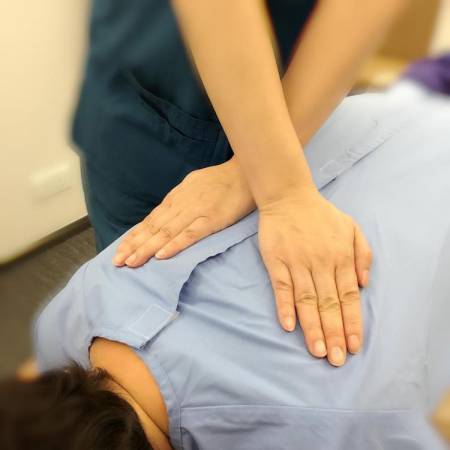Chiropractic Manipulation
- Home
- Non-Surgical Procedures
- Private: Chiropractic
- Services
- Chiropractic Manipulation

Chiropractic Manipulation
The most common therapeutic procedure performed by doctors of chiropractic is known as “spinal manipulation,” also called “chiropractic adjustment.”
The purpose of manipulation is to restore joint mobility by manually applying a controlled force into joints that have become hypomobile – or restricted in their movement – as a result of a tissue injury. Tissue injury can be caused by a single traumatic event, such as improper lifting of a heavy object, or through repetitive stresses, such as sitting in an awkward position with poor spinal posture for an extended period of time. In either case, injured tissues undergo physical and chemical changes that can cause inflammation, pain, and diminished function for the sufferer. Manipulation, or adjustment of the affected joint and tissues, restores mobility, thereby alleviating pain and muscle tightness, and allowing tissues to heal.
A chiropractic adjustment typically involves:
- A high velocity, short lever arm thrust applied to a vertebra
- An accompanying, audible release of gas (joint cavitation) that is caused by the release of oxygen, nitrogen, and carbon dioxide, which releases joint pressure (cavitation).
- A relieving sensation most of the time, although minor discomfort has been reported (that usually lasts for a short time duration) if the surrounding muscles are in spasm or the patient tenses up during this chiropractic care.
Chiropractic Adjustment Side Effects:
The most common reaction to a chiropractic adjustment is aching or soreness in the spinal joints or muscles. If this aching or soreness occurs, it is usually within the first few hours post-treatment and does not last longer than 24 hours after the chiropractic adjustment. Application of an ice pack often reduces the symptoms relatively quickly.
 Book an Appointment
Book an Appointment


